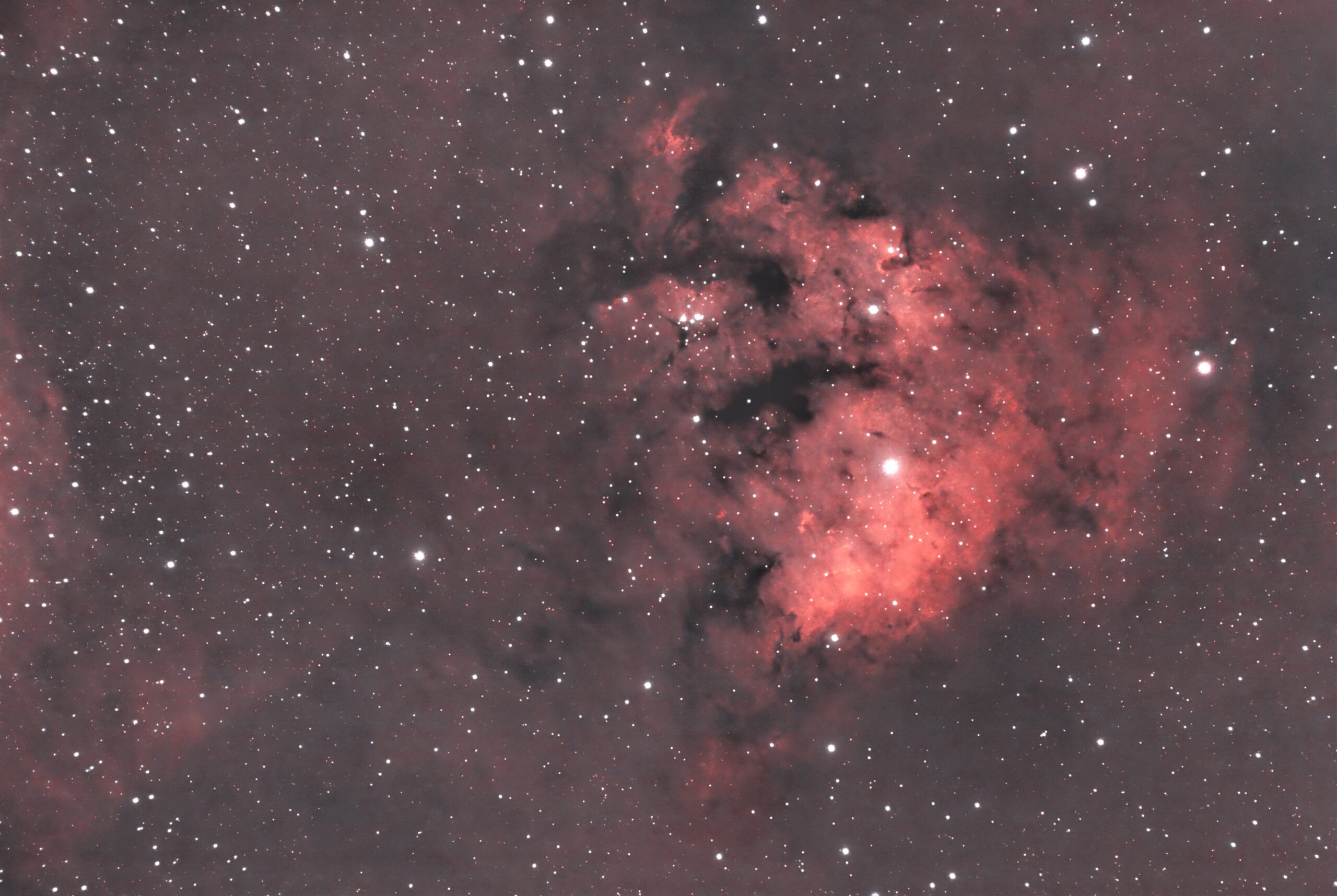NGC 7822

This is my first post of 2023. This Christmas, I received a Skywatcher EQ-6-R mount, and I have had some trouble with it. When I stripped down my pier and modified everything to get it to fit, I plugged it all in, and it was dead. A DOA….
As it was Christmas, everything was shut until the new year. Eventually, my support ticket was answered, and a new motherboard was sent out. After it was fitted, I tried again, but this time it powered up, but the USB didn’t work!!
So, another motherboard was sent out. This one worked!! But as usual, we had clouds, rain, and storms for a few weeks.
This is not the greatest image because I didn’t get enough time to take more images, but it marks a milestone with the new mount.
Information about NGC 7822
NGC 7822 is a fascinating astronomical object that has captivated the imaginations of astronomers and stargazers alike. This star-forming region is located in the constellation of Cepheus, about 3,000 light-years away from Earth. It is a massive cloud of gas and dust that spans about 60 light-years across and is home to some of the most spectacular sights in the night sky.
One of the most striking features of NGC 7822 is the presence of several massive stars that are responsible for ionizing the gas in the region. These stars are some of the brightest and hottest in the galaxy, and their intense radiation causes the surrounding gas to glow with a beautiful red hue. This gives NGC 7822 its distinctive appearance and makes it a popular target for astrophotographers.
But NGC 7822 is more than just a pretty sight. It is also a site of intense star formation, with new stars being born within its dusty clouds. The process of star formation is complex and takes millions of years to complete, but NGC 7822 provides a unique opportunity for astronomers to study this process in detail.
One of the key features of NGC 7822 that makes it such an interesting object for studying star formation is the presence of dense knots of gas within the cloud. These knots are regions where the gas has become so dense that gravity has taken over, causing it to collapse in on itself and form new stars. By studying these knots and the processes that lead to their formation, astronomers can better understand how stars are born and how they evolve over time.
NGC 7822 is also a site of ongoing research into the formation of massive stars. These stars are some of the most important objects in the universe, but their formation is still poorly understood. By studying the massive stars in NGC 7822 and the processes that lead to their formation, astronomers hope to understand better how these stars are born and what makes them so different from their smaller counterparts.
In addition to its scientific importance, NGC 7822 is also a popular target for amateur astronomers and astrophotographers. Its striking appearance and proximity to Earth make it an ideal object for those looking to explore the wonders of the night sky. With a good telescope and a clear night, it is possible to see the glowing gas clouds and the massive stars that make NGC 7822 such a special object.
In conclusion, NGC 7822 is a fascinating astronomical object that has captured the attention of astronomers and stargazers alike. Its unique properties make it an ideal target for studying the processes of star formation and the evolution of massive stars. But it is also a beautiful sight that can be enjoyed by anyone with interest in the night sky. So next time you look up at the stars, take a moment to appreciate the wonder of NGC 7822 and all it represents.
